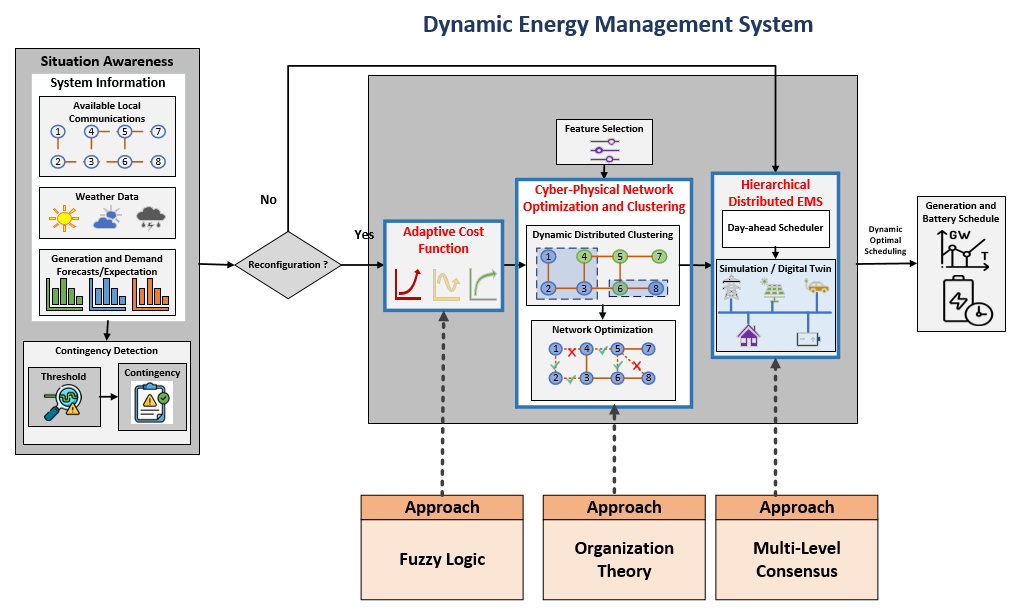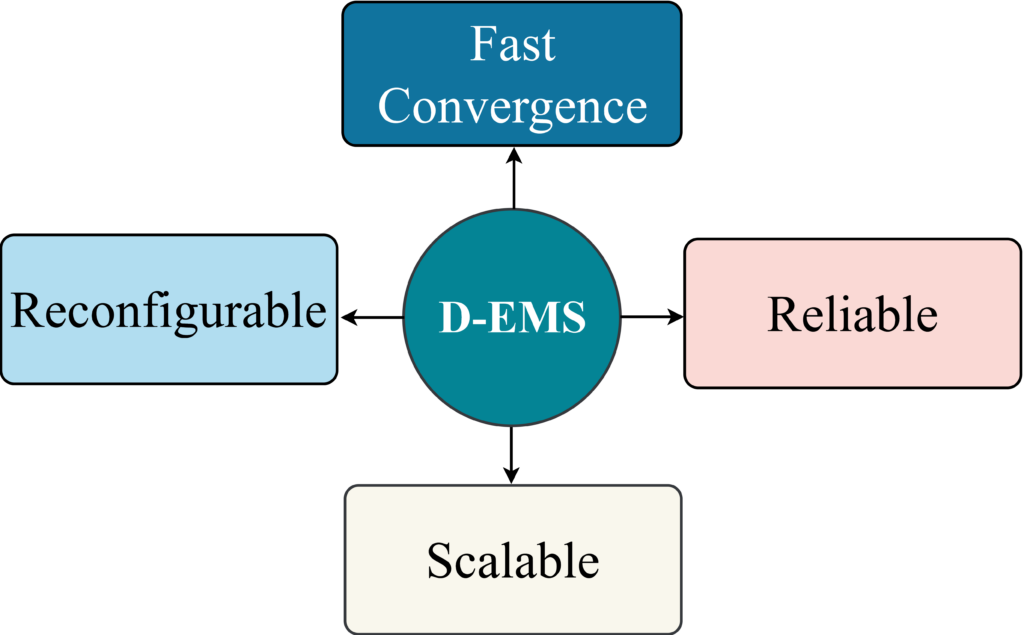
The electric power system is vital to national infrastructure, yet vulnerable to natural disasters. Traditional centralized control strategies are prone to single points of failure and high computational costs. In contrast, distributed energy management systems (EMS) offer improved resilience by reducing failure risks and easing communication bottlenecks—crucial for emergency response.
During disasters, when grid infrastructure is damaged or destroyed, distributed EMS-enabled microgrids can restore power to critical facilities like hospitals and emergency centers. However, these systems face challenges in scalability, convergence speed, and real-time reconfigurability—especially in large-scale, time-sensitive scenarios.
To overcome the state of the art challenges, our research lab (ADAC) has proposed a novel Dynamic Energy Management System (D-EMS) framework for microgrids to perform self-reorganization for the Hierarchical Collaborative Distributed Energy Management Systems (H-CoDEMS) automatically and in a hierarchical structure to achieve log-scale scalability, fast convergence and reconfigurability. Leveraging situational awareness and intelligent management, the system adopts a hierarchical distributed consensus framework to enable fast and collaborative decision-making. This ensures efficient power system scheduling operations, allowing for rapid power restoration and ultimately saving lives.
Key Features of D-EMS

